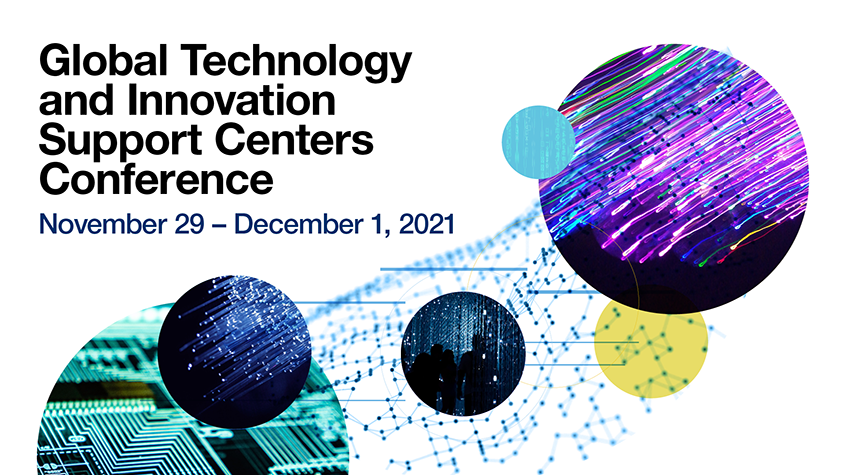Summary of the Global TISC Conference, November 29 to December 1, 2021
December 9, 2021
The first-ever Global TISC Conference was held from November 29 to December 1, 2021. The Conference, which was a joint collaboration between WIPO and the China National Intellectual Property Administration (CNIPA), brought to the fore the invaluable contribution provided by TISCs from across the world and explored how to deepen their networking on a global scale.

The Global TISC Conference explored in particular the role of Technology and Innovation Support Centers (TISCs) in:
- facilitating technology transfer; and
- contributing to technology-based solutions to social and economic issues faced by communities worldwide.
The Conference was officially opened by both the Director General of WIPO, Mr. Daren Tang and the Commissioner of CNIPA, Mr. Shen Changyu. The Commissioner highlighted the importance of deepening the participation in global IP governance and promoting knowledge sharing. Mr. Daren Tang noted increasing investments in research and development, explaining the challenges that are met by industry, researchers and government when taking their innovations to market and the invaluable role that TISCs play in supporting with this innovation journey.
In addition, the Conference examined:
- How TISCs can facilitate the transfer of technologies into local communities to create social and economic impact;
- How TISCs can facilitate the transfer of technologies to communities worldwide;
- How resources and services provided by WIPO and national TISC networks can facilitate the management of national TISC projects and promote further exchanges in experiences and best practice between TISC networks.
The Conference provided an opportunity to share experiences and best practices in view of improving the effectiveness and sustainability of TISCs, allowing them to better serve the needs of innovators around the world and help them create value from the innovations.
Over 950 participants from 98 countries joined the Conference and had the opportunity to interact with experts from TISC networks, government, academia, and industry in exploring how to create a truly global TISC network.
In conclusion, the Assistant Director General of the IP and Innovation Ecosystems Sector, Mr. Marco Aleman, highlighted the following key takeaways:
- Networking is critical not only to enabling technology transfer but also to sharing knowledge, experiences, and good practices, making technology transfer more effective;
- Global networks open a world of new opportunities for technology transfer and sharing knowledge, experiences, and good practices;
- Networks must connect not only TISCs and the technology providers with whom they are often linked but also connect with (and potentially build the capacities of) technology consumers, that is organizations and communities that require (and may be expected to implement) technology solutions transferred to them [as highlighted on Day 1];
- Governments have an important role in catalyzing the establishment and development of networks at the national and international level [as highlighted on Day 2];
- TISCs can develop their ability to participate in technology transfer by building on their capabilities (e.g. in patent analytics, licensing, valuation) and making more full use of the resources available to them (e.g. Landscape Reports, WIPO Manual on Open Source Tools for Patent Analytics, WIPO Patent Analytics Handbook, IP Toolkit for Universities and Public Research Institutions, Toolkit for Using Inventions in the Public Domain for assessing technology projects, WIPO Green as an IP marketplace).
The Conference was closed by the Deputy Commissioner of CNIPA, Mr. Gan Shaoning, who drew attention to the importance of cooperation in further enhancing the role of TISCs and in promoting vibrant IP ecosystems and economic and social development around the world.